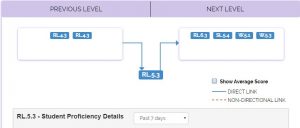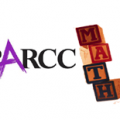If you have visited your child’s school lately, you are aware of how dramatically the education system has changed in one generation.
One change that is especially confusing for parents is grading and assessment.
In most cases, students no longer receive a report card with letter grades for each subject. Instead, they often get a series of numbers that show their progress on individual competencies or standards.
Though it may be confusing for parents, this is actually a positive change in feedback and assessment. Instead of a one-dimensional representation a student’s overall success or failure, this system yields a wealth of detailed information about your child’s mastery of various knowledge and skill sets.
So how to make sense of all these numbers to understand how your child really is doing?
How can you tell if he or she is on track, or needs some extra support?
The Lumos Learning Coherence Map is a valuable tool for parents, giving them a clear visual of their child’s progress on individual Math and ELA Standards.
Let’s take a minute to understand how it works.
The standards
Math and ELA standards for each Grade Level from 3rd grade up through high school are represented on a grid. Simply click on your child’s Grade Level/Content Area to see a list of the standards connected with it.
It’s also possible to navigate to individual Standards by typing them manually into the search bar.
Opening up an individual Standard brings you to a visual representation of its connection to other standards as well as the percentage of proficiency that your child has achieved.
It also brings up links to resources that can be easily used to support your child in attaining proficiency in the standard.
Here’s how this might look when viewing your child’s progress.
Learn about the standard
Let’s say you receive feedback from your child’s teacher that he/she is working on Math Standard 3.MD.6.
It’s possible that your teacher has indicated a description of this standard, but if not, all you have to do is type it into the Search bar to immediately navigate to a description of that standard.
Here you can see that this Standard entails “Measure areas by counting unit squares.”
Now you understand that your child is learning how to determine the area of an object by counting square units (i.e, square feet, square meters, square inches, etc.)
Understand your child’s progress
The Map also gives you a percentage number, revealing how proficient your child is in that Standard.
If your child is 100% Proficient, that means he or she is ready to move on to the next level.
This information is also readily available in the Coherence Map of the Standard. A blue line connects it to the Standard(s) that most logically follow next.
So if your child has mastered Standard 3.MD.6, he or she is then ready to move on to 3.MD7a.
However, if the percentage number is very low, your child needs to work on Standard 3.MD.6 a bit more.
If you scroll to the bottom of the screen, you will find a helpful directory of resources specifically targeted to the Standard. A variety of available apps, videos, and practice questions empower you to give your child the extra help and support he or she needs.
The Map will also show how proficient your child is in the preceding Standard. If he or she has not yet mastered the previous standard, that is a signal that you may need to support your child in mastering the Previous standard before attaining proficiency in the current one.
To sum up, the Coherence Map is a valuable tool to understand and navigate your child’s Grade-Level Standards and support him or her in achieving proficiency.






